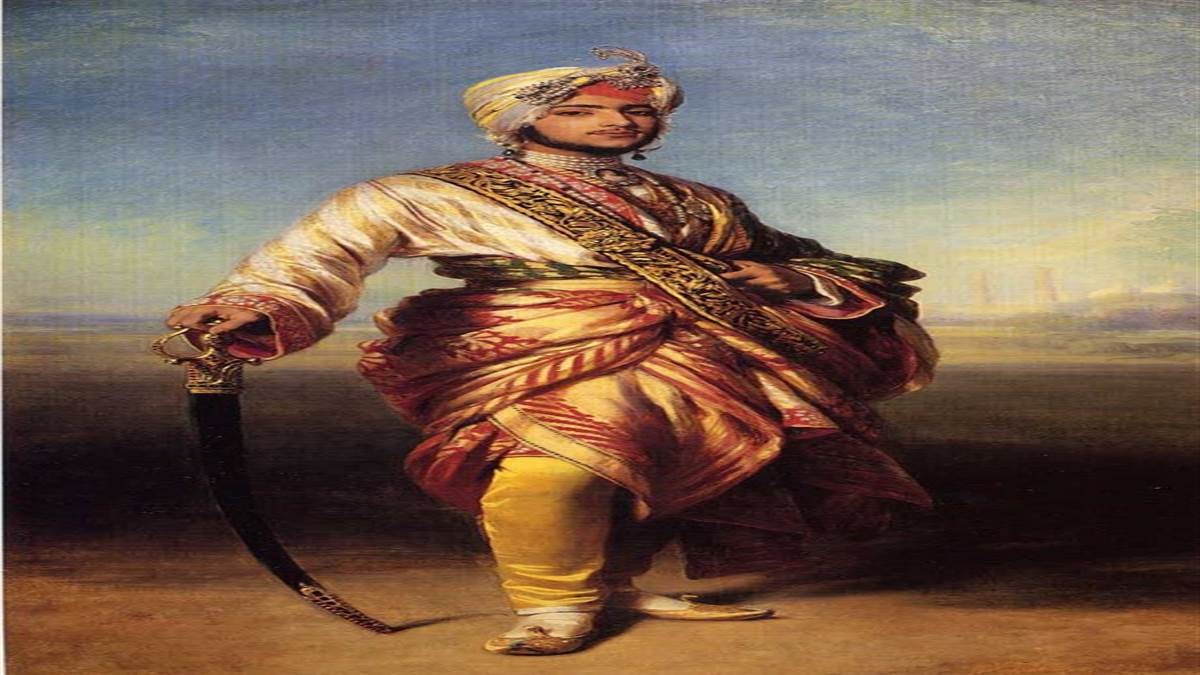It was Maharaja Dilip Singh's 11th birthday. This was his first birthday after losing the state status. Everything was done to make this young king happy. A small 'birthday party' was organised. So that the Maharaja would not see that everything was lost now. Should he have lost it at least when he was the owner of the state division last year, there is not much difference between his birthday celebration and his 11th birthday. The plan for birthday gifts started. His guardian asked the British government for permission to give some gifts to the Maharaja on this birthday. On the morning of his birthday he was presented with jewellery worth about one lakh rupees from his own Toshakhana (which was now occupied by the British). In November 1849 A.D. Lord Dalhousie came on an inspection tour of Lahore. This inspection was of the Lahore Fort. At this time he ordered Maharaja Dilip Singh to be taken from Punjab to Fatehgarh on the banks of the Ganges. When the caravan left Lahore the Maharaja was not told where he was being taken. The women of the fort were crying when the convoy was going for the funeral of a king. This gave the Maharaja an idea of his future. When he went to the memorial of his father Sher-e-Punjab, Sarkar-e-Wala, Sarkar Khalsa Ji, he prayed silently. Dilip Singh was detained for a night at Bassian Kothi in Ludhiana district near Raikot on 31 December 1849. In 2015, the then government of Punjab established this historic Bassian Kothi as a memorial to Maharaja Dilip Singh. Under tight surveillance, the Maharaja's caravan reached Fatehgarh via Ferozepur, Ambala, Saharanpur, Meerut. Fatehgarh is a cantonment town in Farrukhabad district of the state of Uttar Pradesh. It is located on the southern bank of the river Ganges. It is the administrative headquarters of Farrukhabad district. The city has a major Indian Army establishment in the form of Rajput Regimental Centre, 114 Infantry Battalion TA and Sikh Light Infantry Centre.
The historic buildings located on the banks of the holy river Ganges date back to the early 1800s. These buildings were the same ones where Maharaja Dilip Singh was lodged after he was brought from Lahore. Even today, there are different bungalows here which are used as residences and mess for the officers of the Indian Army. The place was once part of the 150-acre Dilip Singh Estate of Maharaja Dilip Singh, the youngest son and successor of Maharaja Ranjit Singh. These spacious bungalows have large verandas and around 20-20 rooms each. The Maharaja was deported from Lahore to Fatehgarh at the age of 10 after the Second Anglo-Sikh War. On his deportation from Lahore, Sir (Dr.) John Spencer Login, a native of Orkney, Scotland, who initially served as a medical officer in the Bengal Army, was then appointed as the Maharaja's medical guardian and accompanied Dilip Singh to Fatehgarh in 1850. Before moving to Fatehgarh, Dr. Login was also in charge of the Toshakhana (royal treasury) of Lahore. Fatehgarh Residence Dr. Login also invited his wife Lady Lena Login from England to Fatehgarh. Dr. Kohinoor Diamond. It was John Loggin who surrendered it to Governor General Lord Dalhousie. Which was sent to England by the Governor General on 6 April 1850 on a ship named 'HMS Medya' under strict surveillance. Many bungalows were built in Fatehgarh which are still there and there is a cantonment there even today. Information about various bungalows is given on the stones installed there, according to which Bungalow No. 5 is the same place where Maharaja Dilip Singh converted to Christianity on 8 March 1853 before his exile to England. All this happened in the presence of Dr. Login. Water for baptism was brought from the flowing river Ganges. Dilip Singh was sent to England on 19 April 1854 by the steamer SS Hindustan, away from his inheritance and state. According to history, the last Sikh Maharaja of Punjab, Dalip Singh, was brought from Lahore to Fatehgarh at the age of ten-eleven and sent to England at the age of fifteen-sixteen. Before the Maharaja's arrival in England, the Kohinoor diamond which once adorned the turban of the Sher-e-Punjab had reached British soil forever.
Change
Before converting to Islam, Maharaja Dalip Singh gifted his hair to Lady Login in this bungalow number-5. This bungalow is currently the Officers Mess of the Rajput Regimental Centre. Residence Bungalow No: 7 is currently known as 'Rajput House'. Maharaja Sher Singh's wife Rani Dukano (Dalip Singh's sister-in-law) and their son Shivdev Singh lived in this bungalow, who were exiled after the capture of Punjab in 1849 and they moved to Fatehgarh in Uttar Pradesh with Dalip Singh. The Maharaja built a secret passage from the palace to the Ganga for Maharani Dukano to take a bath, even today this place is known as 'Rani Ghat'.
 look news india
look news india
